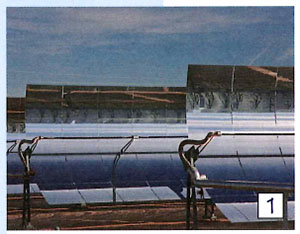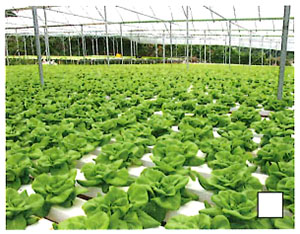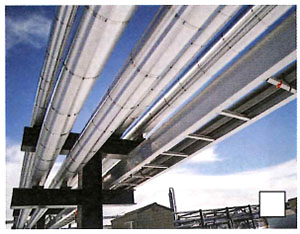Watch and Listen
1. Watch the video. Write T (true) or F (false) next to the statements. Then, correct the false statements.
___ 1 People are using wind as a source of energy these days.
___________________________
___ 2 The ship made it possible to build the turbines in the middle of London.
___________________________
___ 3 The turbines can get energy even from light winds.
___________________________
___ 4 It was difficult to build the turbines in sunny weather.
___________________________
___ 5 One turbine can provide energy for thousands of homes.
___________________________
2. What the video again. Complete the sentences with the numbers in the box.
12 120 175 3,000 500,000
1 The wind farm is about ________ miles from the coast of England.
2 There are ________ turbines in the London Array.
3 Each of the turbines is about ________ m across.
4 Each turbine can provide electricity for ________ homes.
5 The London Array provides electricity to more than ________ homes.
Answers
1
1 T
2 F; The ship made it possible to build the turbines in the middle of the sea/water.
3 T
4 F; It was difficult to build the turbines in windy weather.
5 T
2
1 12 2 175 3 120 4 3,000 5 500,000
Audioscripts
Blowing in the wind: offshore wind farms
Narrator: We humans use a lot of energy and some traditional energy sources are running out. Where can we find alternative energy sources? These days, one popular source is wind.
In 2013 the largest offshore wind farm opened here in the open sea.
It’s called the London Array and it’s located about 12 miles from the southeast coast of England.
How was it possible to build this giant wind farm in the water?
This was the answer.
Discovery is a special ship that can rise completely out of the water on giant ‘legs’. It made a safe building area in the middle of the sea possible.
And it could hold all the parts to build each wind turbine.
These huge pieces of the turbine look like airplane wings. They were designed to get as much energy as possible, even from light winds.
But as you can imagine, they were difficult to assemble, especially in windy weather.
It took a team effort. Everything had to line up perfectly.
Success!
Each one of these wind turbines is almost 400 feet across. That’s 120 metres, about as big as the London Eye. And they built 175 of them.
Every turbine can provide power for 3,000 homes. So now, because of the London Array wind farm, over half a million homes in England have clean electricity.
Listening 1
1. Listen to the lecture and choose the best answers.
1 Desert farming uses solar energy and water / traditional farming.
2 NASA has been researching hydroponics because it allows us to grow food with more water / in extreme climates.
3 The greenhouse is heated by using fresh water / solar power.
4 The plants grow in a greenhouse / desalination plant.
5 Food from desert farms contains no pesticides / more salt.
6 People in Australia / around the world are excited about hydroponics.
7 Desert farm use fossil fuels / can help solve the global food problem.
8 The future of hydroponics is known / not known.
2. Listen to part of the lecture. Number the pictures (a-f) in the order you hear them (1-6).
HYDROPONICS PROCESS

a seawater in special containers

b a desalination plant

c tomatoes on sale in the supermarket

d mirrors for reflecting heat

e plants growing in the greenhouse

f pipe with hot oil inside
3. Listen again to part of the lecture and complete the summary.
Sundrop Farm, Australia: Hydroponics process
● The farm is 1__________ metres from the sea.
● Heat is reflected from the 2__________ onto a pipe which has oil inside.
● The hot oil heats up the 3__________.
● When the seawater is at a temperature of 4__________ °C, the steam heats the greenhouse.
● The desalination plant produces up to 5__________ litres of fresh water every day.
● No pesticides are used during the process.
● This type of farming has a minimal effect on the 6__________.
Answers
1
1 water 2 in extreme climates 3 solar power
4 greenhouse 5 no pesticides 6 around the world
7 can help solve the global food problem 8 not known
2
2 f 3 a 4 e 5 b 6 c
3
1 100 2 sun 3 (sea)water 4 160 5 10,000
6 environment
Audioscripts
1
Good morning. Today I want to explain some alternative solutions which may help reduce some of the problems related to climate change. The first solution uses solar energy to grow food in the desert. First of all, I’ll explain how farming in the desert works. Then, we’ll briefly discuss how this type of farming could solve some of the environmental problems we are now facing. We’ll discuss some possible problems with this system.
So, how does it work? As we all know, in order to grow plants we need water and sunlight. There’s a lot of sunlight in the desert, but very little water. Scientists have combined solar energy with a farming technology called hydroponics. Hydroponics means growing plants in water. Plants don’t need to grow in the ground, but they do need nutrients to help them grow. Nutrients are like food for the plants. So, if you add the nutrients to water, you can grow fruit and vegetables in water. NASA scientists have been developing this method of growing food because it could allow us to grow food in any climate – in Antarctica, the Sahara desert or even on Mars. You might ask how this method of growing plants helps with the problem of climate change. I mean, after all, it uses fresh water, which is a limited resource.
An Australian company, Sundrop Farms, combined hydroponics with solar energy. Traditional farming uses between 60 and 80 percent of our planet’s fresh water. However, Sundrop Farms doesn’t use fresh water. It uses seawater. Sundrop Farms is only 100 metres from the shore. A line of mirrors reflects heat from the sun onto a pipe which has oil inside. The hot oil in the pipe heats up seawater, which is kept in special containers. When the seawater reaches 160 °C, the steam provides electricity. Some of the hot water is used to heat the greenhouse during the cold desert nights. The plants grow in the greenhouse – a building with glass walls and a glass ceiling. The rest of the heated water goes to a desalination plant. Desalination is when we remove the salt from seawater to create drinkable water – that is, water which is clean and safe to drink. The desalination plant can produce up to 10,000 litres of fresh water every day. The farmer adds nutrients to this fresh water and then grows fruit and vegetables.
To summarize, solar energy removes the salt from the seawater and the fresh water is then used inside the greenhouse, where the plants are growing. Many people around the world are really excited about this technology. So far, Australian farms have grown tomatoes, peppers and cucumbers using hydroponics. Many supermarkets are interested in buying these vegetables because they’re grown without pesticides or other chemicals. Some people think hydroponics is the perfect solution to the world food crisis.
Finally, the desert farms use solar energy and not fossil fuels, thus their negative effect on the environment is minimal. Now, of course, the future of hydroponics is unknown. But I think that desert farms might be a very interesting way to farm in the future. Now let’s discuss some of the problems …
2 3
An Australian company, Sundrop Frams, combined hydroponics with solar energy. Traditional farming uses between 60 and 80 percent of our planet’s fresh water. However, Sundrop Farms doesn’t use fresh water. It uses seawater. Sundrop Farms is only 100 metres from the shore. A line of mirrors reflects heat from the sun onto a pipe which has oil inside. The hot oil in the pipe heats up seawater, which is kept in special containers. When the seawater reaches 160 °C, the steam from this process provides electricity. Some of the hot water is used to heat the greenhouse during the cold desert nights. The plants grow in the greenhouse – a building with glass walls and a glass ceiling. The rest of the heated water goes to a desalination plant. Desalination is when we remove the salt from seawater to create drinkable water – that is, water which is clean and safe to drink. The desalination plant can produce up to 10,000 litres of fresh water every day. The farmer adds nutrients to this fresh water and then grows fruit and vegetables.
To summarize, solar energy removes the salt from the seawater and the fresh water is then used inside the greenhouse, where the plants are growing. Many people around the world are really excited about this technology. So far, Australian farms have grown tomatoes, peppers and cucumbers using hydroponics. Many supermarkets are interested in buying these vegetables because they’re grown without pesticides or other chemicals. Some people think hydroponics is the perfect solution to the world food crisis.
Finally, the desert farms use solar energy and not fossil fuels, thus their negative effect on the environment is minimal. Now, of course, the future of hydroponics is unknown. But I think that desert farms might be a very interesting way to farm in the future. Now let’s discuss some of the problems …
Listening 2
1. Listen to the debate. Are Emma and Jack for or against nuclear energy? What are some of the reasons they give? Take notes.
Emma
For or against? :
Reasons:
Jack
For or against? :
Reasons:
2. Listen to the debate again and circle the correct answers.
1 What are the two reasons why Emma mentions the Fukushima nuclear power plant?
a To say that nuclear power plants can be dangerous.
b To show that nuclear energy can help develop a country.
c To give an example of the long-term effects of a nuclear disaster.
d To show that nuclear power is usually safe.
2 What three arguments are mentioned in favour of nuclear energy?
a It’s cheap.
b It doesn’t pollute the air.
c It uses advanced technology.
d It can supply a lot of electricity for a long time.
3 What are two ways that nuclear energy can help developing countries?
a They can export the energy.
b They can buy the energy.
c They can develop new technology.
d They can be independent of gas and oil prices.
Answers
1
Emma
For or against?: against
Reasons: accident will have long-term effect on environment; building power plants pollutes the air; expensive
Jack
For or against?: for
Reasons: safe; doesn’t pollute; always enough of it; cheap; can provide a huge amount of electricity; selling electricity helps the economy; makes a country less dependent on oil and gas; wind and solar energy can’t solve climate change and are expensive
2
1 a; c 2 a; b; d 3 a; d
Audioscripts
Host: Welcome to today’s debate on the advantages and disadvantages of nuclear energy. Some people think that nuclear power is an environmentally friendly source of energy because it creates less pollution than traditional power plants. However, the opponents of nuclear energy believe that it has more dangers than benefits. Debating this issue today are Emma Martinez and Jack Sullivan. Thank you for joining us today to share your opinions about this important issue.
Emma: Thank you. I want to argue that there are many problems with nuclear power. It may be true that there are very few accidents caused by nuclear plants, but if there is an accident, then it will be huge and it will have long-term effects on the environment. For example, after the Fukushima nuclear disaster in Japan, the government had to tell people to leave their homes because of the possibility of radiation. The radioactive material spread to water and food, such as tea, milk, beef and fish. For months after the accident, the Fukushima plant was dangerous. People will not be able to live in the nearby area for the next 20 years. This is the big risk of building a nuclear power plant. In my opinion, it’s irresponsible for governments to allow nuclear power plants to be built near cities. They’re just too dangerous.
Jack: I have to disagree. I think we should look at the bigger picture. Some people are worried that nuclear power is a big risk. And yet there are hundreds of nuclear power plants all over the world and there have only been three major nuclear accidents in the last 30 years. In fact, research shows that many more people die while working with coal, natural gas and hydropower – that is, electricity powered by water. On top of that, nuclear power is the most environmentally friendly and the most sustainable source of energy. In other words, it doesn’t damage the environment and there will always be enough of it. A nuclear power plant does not pollute the air, it’s relatively cheap and it can provide a huge amount of electricity to our cities. And of course, our cities are growing …
Emma: I’m sorry, can I interrupt? Some people say that nuclear energy doesn’t pollute the air, but that’s not completely true. It takes many years to build a nuclear power plant. During this time, hundreds of machines work day and night and pollute the air in the area. I don’t think it’s necessary to build nuclear power plants when we have safer and more environmentally friendly energy sources, such as solar and wind energy. They’re cheaper and they’re unlimited sources of energy. Also they’re more affordable for most countries, when compared with nuclear power. Building a nuclear power plant is not a solution for poor or developing countries.
Jack: I’m not sure about that. I think that building nuclear power plants is the perfect solution for many poorer countries. Yes, it might be expensive to build the plant, but once the nuclear plant is there, the cost of the production of energy is very low. Plus, the country can sell the electricity to its neighbours and improve its economy. It’s a long-term solution. And it makes a country less dependent on oil and gas. At the moment, whenever oil or gas prices go up, it’s the poor countries and poor people who suffer. Some people think that solar and wind energy are greener than nuclear energy. But I don’t think that’s accurate. Wind turbines are not exactly friendly for birds, not to mention that solar panels and wind turbines take up a lot of space. They’re also very expensive and don’t last as long as a nuclear power plant. In short, wind and solar energy can’t solve the problem of climate change and they aren’t a good solution for poor countries.
Host: Thank you both very much. Let’s take some questions from the audience …
